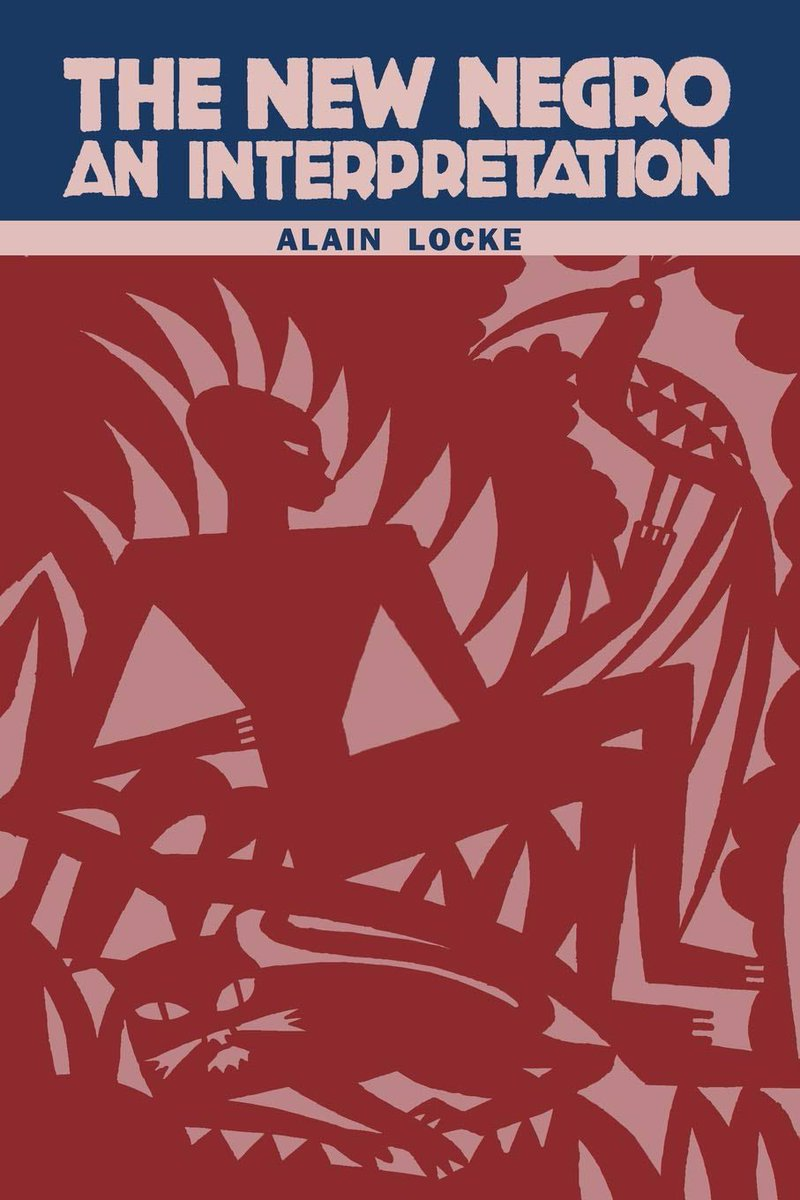The Harlem Renaissance and the “New Negro”
- Hazal Kazancı
- May 7, 2023
- 6 min read
The Harlem Renaissance was a pivotal period in American history, characterised by a flowering of African American art, literature, and culture in the 1920s and 1930s. It emerged against a backdrop of racism, discrimination, and segregation, and was fuelled by the migration of thousands of African Americans from the rural South to urban areas in the North, a phenomenon known as the Great Migration. This massive population shift began in the late 19th century and continued through the mid-20th century, and had a profound impact on American society and culture. The migration brought about significant social, cultural, and economic changes, and played a crucial role in the emergence of the Harlem Renaissance. The Harlem Renaissance was more than just a literary and artistic movement; it was a cultural and intellectual awakening that challenged prevailing notions about African Americans and their place in American society.
From unskilled laborers to an educated middle-class, they shared common experiences of slavery, emancipation, and racial oppression, as well as a determination to forge a new identity as free people (National Museum of African American History and Culture, n.d). African American writers, artists, and musicians sought to create a new cultural identity that celebrated their unique history and traditions, while also engaging with the broader American cultural landscape. They rejected the negative stereotypes and caricatures that had long defined African Americans in mainstream culture, and instead embraced a more nuanced and complex representation of their experiences. The movement paved the way for later generations of African American artists, writers, and musicians, and remains an important cultural touchstone to this day. Drawing on a range of primary and secondary sources, this article aims to provide a comprehensive overview of the emergence of the Harlem Renaissance and effects of its key document the New Negro by Alain LeRoy Locke.

Mecca of Black Society: Harlem
For decades, African Americans were faced with prejudice and discrimination in every aspect of life even after they obtained their freedom. The Reconstruction which was designed to restructure the Southern states after the Civil War, provide a pathway for their readmission to the Union, and specify how whites and blacks could coexist in a post-slavery society (Library of Congress, n.d) was unable to meet the needs of black people as opposed to its promises. Decades passed but struggle was the same. Around 1910s a mass migration started for the sake of liberty, equality, justice and opportunities, already provided to white people. Black people began to migrate from Southern to Northern states (New York, Chicago, Detroit, and Pittsburgh) that were said to be much more tolerant towards African Americans while offering better job and education opportunities (National Archives, n.d).

However, Harlem, neighbourhood located in the northern part of the borough of Manhattan in New York City, became the Mecca of Black society. There were several factors contributed to this but the most significant is the housing crisis. Harlem, more than just a physical place, rather a metaphorical space that represented the hopes, struggles, and potential of African Americans, was a relatively affordable neighbourhood for African Americans who were often excluded from other parts of New York City due to housing discrimination and segregation.
“Harlem’s transition, once it began, followed fairly traditional patterns. As soon as black people started moving onto a block, property values dropped further as whites began to leave and this process was especially evident in the early 1920s. Both black and white realtors took advantage of declining property values in Harlem – the panic selling that resulted when blacks moved in. Addressing the demand for housing generated by the city’s rapidly growing black population, they acquired, subdivided, and leased Harlem property to black tenants” (Wintz, 2015).
This process of acquiring, subdividing, and leasing property to black tenants helped to establish Harlem as a predominantly black neighbourhood and became a significant factor in the development of the Harlem Renaissance, which saw an outpouring of cultural and artistic expression by African Americans in the area. In this regard, Harlem became a hub of African American entrepreneurship and small businesses, as well as a center for social and political activism while giving the opportunity of creating a new and dynamic community of African Americans in Harlem, with its own distinct culture, traditions, and social structures. The cultural and political activities that took place in Harlem during this period contributed to the idea of Harlem as a center of black culture and a symbol of black pride and empowerment. While birthing their own culture, they gradually left imposed ideas and prejudices they bared for a long time which is one of the most crucial aspect of Harlem Renaissance. A new understanding about themselves emerged among black people according to Alain LeRoy Locke, a pioneer of the period.
The New Negro

The term “New Negro“ was popularised by the writer and philosopher Alain LeRoy Locke, who is credited with using the term for the first time in his 1925 anthology The New Negro: An Interpretation. The term was used to describe the emerging black middle class of the early 20th century who sought to challenge the stereotypes and discrimination that had long defined the black experience in America. Alain Locke voices that:
“So for generations in the mind of America, the Negro has been more of a formula than a human being a something to be argued about, condemned or defended, to be "kept down," or "in his place," or "helped up," to be worried with or worried over, harassed or patronized, a social bogey or a social burden. The thinking Negro even has been induced to share this same general attitude, to focus his attention on controversial issues, to see himself in the distorted perspective of a social problem” (1925, p. 3-4).
Locke brings attention to a perception about black society that has been at stake for decades by arguing that black people have been treated as objects of discussion rather than individuals with their own agency and autonomy. They have been the subject of debate, condemnation, and defence, with little attention paid to their own experiences and perspectives. Black people have been seen as a problem to be solved, rather than as equal members of society. Furthermore, Locke suggests that even some black people have internalised this perspective, and have come to view themselves primarily as social problems rather than as individuals with unique identities and experiences.

However, Locke reveals that this is not the case anymore thanks to black people’s changing perception of themselves and the “migration of masses”. Locke highlights the effect of migration of Black people to the different parts of the Northern states while seeing this shift as an effective force of self-realization among the Black. Locke thinks that the "Young Negro" will be different from the previous generation in terms of self-perception which was much more degraded back then.
“With this renewed self-respect and self-dependence, the life of the Negro community is bound to enter a new dynamic phase, the buoyancy from within compensating for whatever pressure there may be of conditions from without. The migrant masses, shifting from countryside to city, hurdle several generations of experience at a leap, but more important, the same thing happens spiritually in the life-attitudes and self-expression of the Young Negro, in his poetry, his art, his education and his new outlook, with the additional advantage, of course, of the poise and greater certainty of knowing what it is all about. From this comes the promise and warrant of a new leadership” (1925, p. 4-5).
Alain Locke concludes his essay with the complex and dynamic nature of Harlem as a community, and the ways in which the experiences of its residents have shaped its culture and identity. He celebrates the resilience and strength of the people of Harlem in the face of adversity, and the sense of solidarity and unity that has emerged as a result. Locke notes that Harlem has attracted people from all over the world, including Africa, the West Indies, and the United States. These people have different backgrounds, professions, and motivations for coming to Harlem, but what they all have in common is their Blackness and the experience of facing discrimination and prejudice in a society that is predominantly White. Despite their differences, Locke observes that the people of Harlem have found a sense of unity and community in their shared experiences of racism and discrimination. The very fact of their shared identity as Black people has brought them together, creating a sense of solidarity and understanding that transcends their individual differences. Locke also notes that the diverse mix of people in Harlem has led to a blending of different cultures, traditions, and perspectives. This has resulted in a rich and vibrant cultural scene, with artists, musicians, poets, and writers all contributing to the creative and intellectual life of the community (Locke, 1925).

In conclusion, Alain Locke’s “The New Negro“ essay was a defining document of the Harlem Renaissance, a movement that celebrated Black culture, identity, and creativity in the United States during the early 20th century. Locke’s essay helped to shift the conversation about Black people from a focus on their social problems to an appreciation of their cultural contributions. It also recognised the diversity of the Black experience, particularly in Harlem, where people from different backgrounds and professions came together to create a unique and vibrant community. The Harlem Renaissance, celebrated Black excellence and creativity, and paved the way for greater recognition and opportunities for Black people in the arts and beyond. The legacy of the Harlem Renaissance continues to inspire and influence artists, writers, and activists today, as a testament to the resilience and creativity of Black people in the face of adversity.
Bibliographical References
A New African American Identity: The Harlem Renaissance. (2022, December 6). National Museum of African American History and Culture. https://nmaahc.si.edu/explore/stories/new-african-american-identity-harlem-renaissance
Dickey, M. (1997). Harlem Renaissance. Landscape Architecture, 87(2), 48–53. http://www.jstor.org/stable/44672830
Locke, A. (1925). Enter the New Negro. Survey Graphic, 6(6), 631-634.
Nast, T. (n.d.). Reconstruction and Its Aftermath - The African American Odyssey: A Quest for Full Citizenship | Exhibitions (Library of Congress). https://www.loc.gov/exhibits/african-american-odyssey/reconstruction.html#:~:text=The%20Reconstruction%20implemented%20by%20Congress,together%20in%20a%20nonslave%20society
The Great Migration (1910-1970). (2021, June 28). National Archives. https://www.archives.gov/research/african-americans/migrations/great-migration
Wintz, C. D. (2015, February). The Harlem Renaissance: What Was It, and Why Does It Matter? | Humanities Texas. Humanities Texas. https://www.humanitiestexas.org/news/articles/harlem-renaissance-what-was-it-and-why-does-it-matter
Visual Sources
Cover Image: Mavink. (n.d.). Famous Jazz Musicians 1920s America [Photograph]. Retrieved from:
https://mavink.com/post/BFDE8F5BF5A4E6293DC0095C76065D5FC8AM51CFC6
Figure 1: Unknown. (n.d.). A Map of the Great Migration Destination [Picture]. Retrieved from: https://jeopardylabs.com/play/jcyc-252021
Figure 2: Winold Reiss. (1925) The cover of the "Harlem, Mecca of the New Negro" issue of Survey Graphic [Picture]. Humanities Texas. Retrieved from:
https://www.humanitiestexas.org/news/articles/harlem-renaissance-what-was-it-and-why-does-it-matter
Figure 3: Alain Locke. (1925). The Cover of Alain Locke's Book the New Negro. [Picture]. the Atlanta Journal Constitution [Picture]. Retrieved from:
Figure 4: Elizabeth Olds. (1937). Harlem Musicians [Painting]. Retrieved from: https://wikioo.org/th/paintings.php?refarticle=AQRLTV&titlepainting=Harlem%20Musicians&artistname=Elizabeth%20Olds
Figue 5: Aaron Douglas. (1939). The Judgment Day [Painting]. Retrieved from:
https://www.arthistoryproject.com/artists/aaron-douglas/the-judgment-day/




Kaiser OTC benefits provide members with discounts on over-the-counter medications, vitamins, and health essentials, promoting better health management and cost-effective wellness solutions.
Obituaries near me help you find recent death notices, providing information about funeral services, memorials, and tributes for loved ones in your area.
is traveluro legit? Many users have had mixed experiences with the platform, so it's important to read reviews and verify deals before booking.